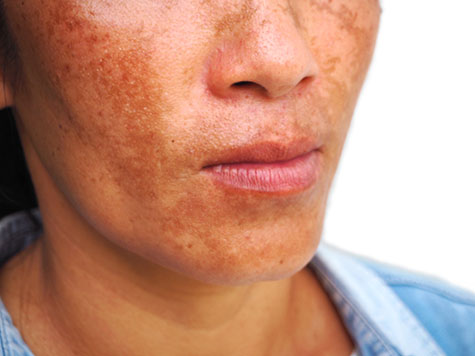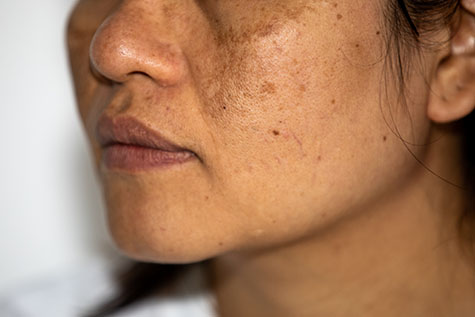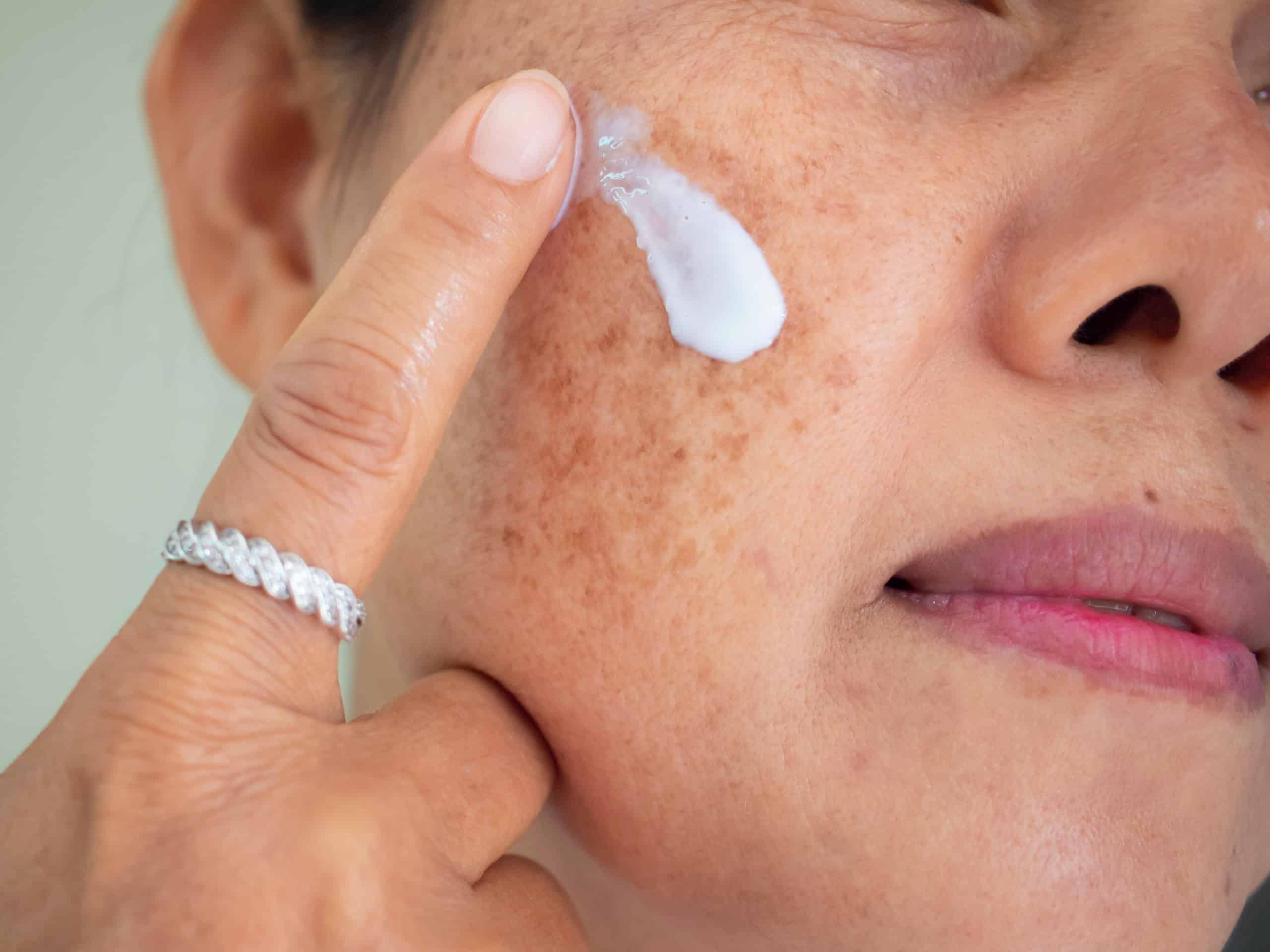What Causes Melasma?

Melasma occurs when the melanocytes, or skin cells that produce pigment, over-produce melanin in certain areas of your skin. Several factors are believed to contribute to the development of melasma such as:
- Sun exposure
- Family history
- Hormonal changes (ex. pregnancy or oral contraceptive use)
- Irritation from certain skin care products
Who Gets Melasma?
Women are much more likely to get melasma than men; only about 10% of people who have melasma are men. In addition, melasma is more common in those with darker skin tones and those with close relatives who have the condition. The condition typically starts between the ages of 20-40 and persists for many years.
How Can I Prevent Melasma?
If you are prone to melasma, you can help minimize new brown or dark spots from forming by:
- Applying broad-spectrum SPF 30+ sunscreen on a regular basis
- Protecting your skin from sun exposure by wearing UV protective clothing, wide-brimmed hats, and sunglasses
- Choosing gentle, non-irritating skin care products
- Avoiding waxing or other treatments that irritate or inflame the skin
Why Treat Melasma?
Melasma is not a dangerous condition or a concern for your overall health, but you may wish to treat it for cosmetic reasons. Occasionally, melasma fades without treatment; typically, this occurs when you remove a trigger for the condition, such as stopping birth control pills. However, when melasma does not subside, treatment is available to help you achieve a more even skin tone.

How Can I Treat Melasma?

Your dermatologist will develop a customized treatment plan for your melasma to suit your specific concerns and goals. Some common treatments for melasma include:
- Hydroquinone, a topical product that is applied to melasma spots to lighten the skin
- Tretinoin
- Azelaic acid
- Kojic acid
- Glycolic acid
- Niacinamide
- Topical and oral tranexamic acid
- Chemical peels
- Laser treatments
- Clear + Brilliant
Schedule an Appointment
If you start to notice melasma developing on your face, you do not need to feel frustrated by repeatedly attempting to cover the dark spots with makeup. Instead, schedule an appointment with our board-certified dermatologists who can help you improve your melasma and prevent new dark spots from developing.
To schedule an appointment at Arlington Dermatology, please call our office or request an appointment online.




